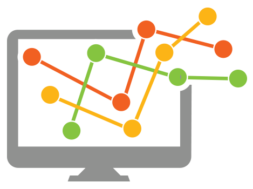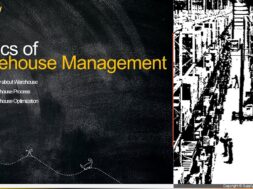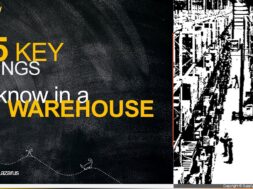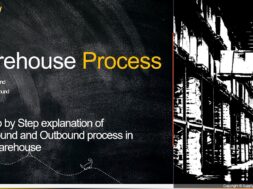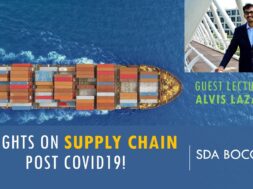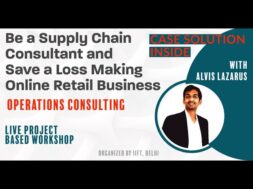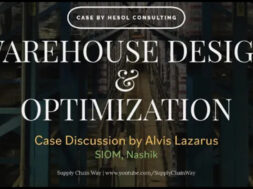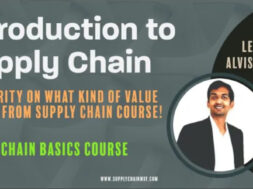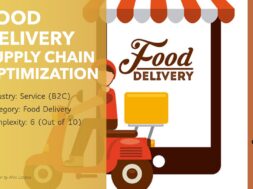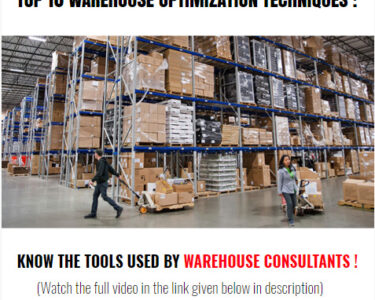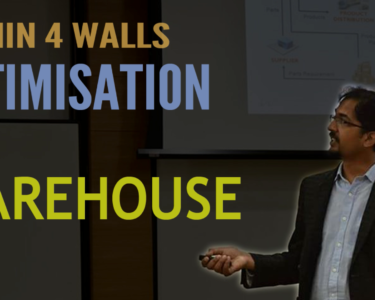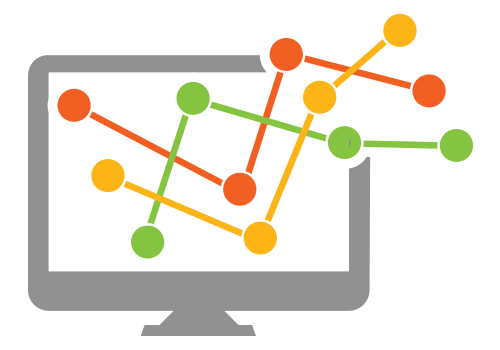
Supply Chain Simulation & Modelling – A Bad strategy?
Before we get into the discussion of “Are Simulation & Modelling a Bad Strategy?”, let’s understand the basics of Simulation and Modelling and why / where / how we do that in a Supply Chain environment.
Have you ever referred your friend’s name to your parents and told something you would like to do in near future, as he/she did? Yes? … ha-ha. All you want to know is how your parents will react and also, if the reaction is going to be bad then you want to proactively avoid it, isn’t it? So what you have done is Simulation! You have simulated the situation and found an answer.
Though Simulation and Modelling are used very frequently; both are neither synonymous nor so different from a supply chain standpoint. I define them as follows from supply chain standpoint:
“A model is built to simulate a real supply chain scenario in a virtual environment or in some cases as an experiment to document, analyse and report out the results. That clarifies the supply chain simulation and modelling.”
Potential Areas where in Simulation plays a vital role:
(I’m not going to boil the entire ocean but would just highlight top 4 supply chain areas where-in simulation would give fantastic results and result in both top line improvement and bottom line savings)
1) Inventory Management –
all simulation and modelling do here is to take a decision on how much to store? where to store? what would be my service fill? Basis these supply chain inventory indicators; we decide an optimum inventory level. There are hundreds of simulators available in the market for this.
2) Warehouse Management –
do you know most of Indian DCs (Distribution centres) | FCs (Fulfilment centres) | Warehouses operate at a cubic space utilization of less than 50%? Shocking? Yes, that’s the reality. Simulation at warehouses (within four walls) is called as ‘Concepting’ or ‘Slotting’. Using this we simulate the entire layout, storage, bins, aisles, material flow, etc. and arrive at the optimum way of storage which could easily bring in 20-30% of space utilization improvement and it also increases your productivity by 10-15% without any investment on automation.
3) Network Planning –
It’s a huge topic but to say in nutshell… where do I keep my storage (warehouses/DC)? the factors that would be considered are the supply points, demand points, inbound logistics cost, outbound logistics cost, storage cost, local policies, state level policies, free trade zones, ease of operations, etc. The result is the nodes/locations where we would be constructing our warehouse for an optimum ‘Total Supply Chain cost’. These programs would be very exciting to plan and implement.
4) Logistics Planning –
Most people get confused between the network planning and the logistics planning. They are not the same. Once the network planning is done it will pass on the storage nodes & capacity as a constraint to the Logistics planning. Logistics planning simulates the frequency of shipment, type of shipment, mode of delivery, transportation cost, pack size, MOQ (Minimum order quantity as input from IM Model) to arrive at an overall Optimum transportation (logistics) cost for the supply chain. Also, this model would be the key to take 3PL decisions or any logistics outsourcing decisions.
So that’s good right? then how come a Simulation and Modelling could potentially be a bad strategy?
Yes, unfortunately Simulation and Modelling becomes a bad strategy by the way they are used and not by the essence of value they can bring-in. Below I have explained how Simulation & Modelling could potentially be a bad strategy:
Simulation on a ‘No Brainer ‘–
This is perfect example of a bad strategy where-in a simulation is forced on a supply chain decision i.e. when you decide to simulate or model where-in the solution is a No Brainer and the way forward is right before your eyes. In these cases, precious time and money would be spent to decide on a solution which was already known.
High End Simulation Runs with ROI of > 5 Years–
To me, investing on an action/product which is not going to give the ROI within 2-3 Years (worst case) is a BLUNDER. Unfortunately, BLUNDER(s) happen quite often and it goes unnoticed in a big organization. There are cases where thousands of dollars are given to third party for high tech simulation runs where-in the same simulation could have been easily done in Excel spreadsheets and MS Access with the right SQL / VBA coding.
Simulation on a Factor which is already a ‘Constraint’ to the Supply Chain –
This happens due to miscommunication between teams. When the supply chain operations have already signed on a warehouse space, in parallel there would be a simulation happening to arrive at where the warehouse should be. This is just an example and in real supply chain, there are multiple scenarios like this occur resulting in simulation been done just for the sake of it and not part of any decision making.
Concluding note:
“Simulation and Modelling are very powerful and when leveraged efficiently will give you a COMPETITIVE EDGE: But, when Simulation and Modelling doesn’t give ROI or not being part of the decision making, would make SIMULATION & MODELLING a BAD STRATEGY ‘
